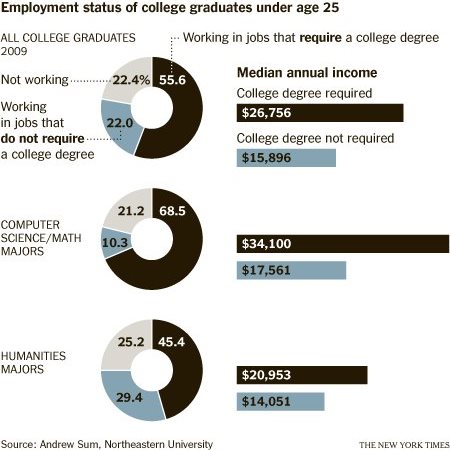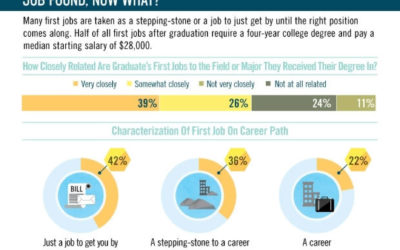Career Readiness
All too often, students do not pursue education in the fields that are most demanded by employers. Furthermore, students in K–12 and institutions of higher education do not receive sufficient information about where demand is for workers (in terms of what industries in the region have large growth). Therefore, too few students attending college or technical schools choose programs that will have high returns on investment.
This trend suggests that there is a lack of useful, and ongoing, career counseling to help students and parents make informed choices, as well as a lack of data being shared with schools about the state’s or region’s economic outlook and career opportunities.
Currently, far too many students drop out or graduate from high school without the knowledge and skills required for success, closing doors and limiting their post-high school options.
About 50 percent of individuals seeking an associate degree at a public institution of higher education are placed in remedial math and/or English courses, and fewer than 10 percent of those students go on to earn their associate degree within three years.
Three-quarters of occupations with a “bright outlook,” (meaning they are high growth or represent new and emerging fields) require some education and training beyond high school.

By 2018, the United States will have 46.8 million job openings. Thirty million of these jobs will require some kind of postsecondary education, and there will be a shortfall of 3 million individuals with the appropriate level of education to fill them.

A College Degree, but Not a College Job
A growing share of recent college graduates are having to settle for jobs that do not require a college degree, and they are earning far less than their peers as a result.
Workers with only a high school education face not only more limited job prospects but also lower wages, lower prestige and more limited career advancement pathways. The skills and knowledge necessary for higher-skill and higher-wage jobs are not naturally acquired through time and experience in low skills jobs.
Although some low skills jobs can lead to success for some people, this is not the norm. If individuals want to have a foothold in the middle class, then they will need to pursue additional education and training to access middle and high skills jobs.
Taking into consideration the analyzed data in their totality (wage, outlook, advancement, and skill and knowledge information), the employment picture is bleak for individuals who do not continue their education beyond high school — and even more bleak for those who do not earn a high school diploma, as shown by the wages and recognition values for Zone 1 jobs.
Explored another way, more than 85 percent of the nearly 73 million individuals who earned minimum wage or less in 2010 did not have a postsecondary degree — and nearly 60 percent had only a high school diploma or less.

Did You Know?
Members of the baby boomer generation held an average of 11 different jobs between the ages of 18 and 42, a trend that will continue to grow with new generations of workers. Providing all students with a baseline of college- and career-ready knowledge and skills in high school equips them with the flexibility necessary to navigate multiple job and career changes in the 21st century economy, a skill that labor market economists see as increasingly essential for 21st century workers.
Career Readiness Infographics
High School Demographics Impacting College Success
2016 High School Demographics Continue to Impact College Success
How College Graduates Feel About Finding Their First Job
The High Cost of High School Dropouts
More than 1 million students drop out of high school each year. What is the cost of dropping out for students? What’s the cost for the country? Here’s a snapshot.



